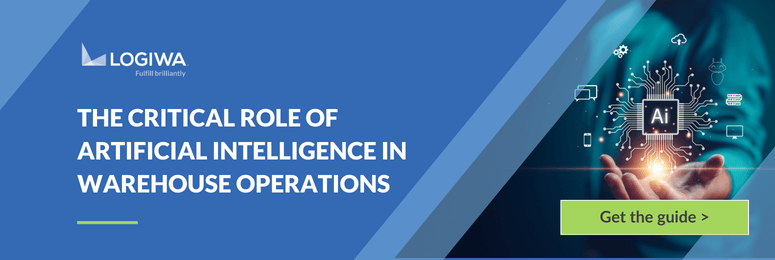The current state of ecommerce makes it imperative for businesses to make smart operational decisions and cost-effective investments in fulfillment technology. Employing a warehouse management system (WMS) is a sure way to get ahead in today’s volatile market, but maximizing your return on investment (ROI) is easier said than done.
Luckily, there are some tried and true ways to get your WMS to pay for itself. In this article, we discuss WMS cost justification, the importance of securing a high ROI, and actionable steps to attain WMS cost benefits as quickly as possible.
Content
WMS Cost Justification
Modern fulfillment is no longer as simple as increasing throughput and balancing inflow against outflow; it involves ongoing cost management and combining optimized warehousing processes, network relationships, and technology to achieve true logistical success.
WMS cost justification is the process of weighing cost savings created by your fulfillment solution against the cost of the system itself. In other words, it helps you to see whether or not your investment is going to lead to competitive profits. The goal is not only to establish that your WMS will pay for itself, but to gain the insights into your gross margins and potential savings to ensure that it does.
Once you have a WMS solution in place, you can start measuring WMS cost benefits and justifying your investment with a long-term ROI analysis. However, doing so preemptively will help you predict potential profits and decide whether a WMS is a lucrative investment for your business. For help calculating ROI, check out Logiwa’s blog, “WMS ROI: How to Measure & Calculate ROI.”
The Importance of a High ROI
Ensuring a high ROI from your WMS can be a matter of survival for high-volume, DTC operations. It is a direct indication that your operation has achieved the three goals of technology adoption: time-to-value, process improvement, and scalability. You need all three to maintain a healthy bottom line and grow your business successfully.
The right WMS will support fast, effective change for your operation, and extend profits that will be evident through the WMS cost justification process. By understanding what WMS software benefits to expect, your operation can be proactive in helping boost ROI, as well. Some examples of WMS cost benefits include:
- Optimized workflows (including inbound and outbound logistics, picking and packing operations, shipping, etc.) leading to increased throughput, higher rates of fulfillment accuracy, and growth in customer/client base
- Improved inventory carrying costs due to higher rates of inventory accuracy and lower carrying costs (less safety stock)
- Reduced manual operating costs through process automation
- Labor efficiency and lower labor costs
- Warehouse space optimization, inventory management, and informed facility planning
- Less mis-shipments and order returns
- Effective compliance protocols e.g. compliant labeling, recall management, etc.
Whether you are adopting a new WMS or searching for ways to improve the profitability of your fulfillment operations, it is important to be patient in achieving and increasing ROI. It may happen within your first several inventory cycles depending on the size and scope of your operations. For others, it may take a year or more. The important thing is achieving the ROI.
Unlock a personalized tour of Logiwa IO
Steps for Getting Your WMS to Pay for Itself
It is up to you to ensure you and your team are doing your part to help your WMS system succeed! Let’s talk through the top ways to increase WMS cost benefits to ensure your investment pays off.
#1 Plan and Execute Implementation Right the First Time
Getting through the WMS implementation process as quickly as possible may seem like a shortcut to profitability, but the setbacks from a rushed implementation, a lack of systems testing, or haphazard onboarding can have disastrous consequences on your ROI- especially if it results in making ineffective processes happen faster.
To ensure positive WMS cost justification results, ensure your WMS has all the necessary functionalities needed to serve your operation before implementation. Overlooking a requirement or skimping on systems testing will result in added costs and a longer journey to ROI. This can include extended implementation timelines, lost automation opportunities (forcing you to maintain manual processes or switch solutions), and endless debugging. When done correctly, a successful implementation can have your WMS paying for itself in a fraction of the time.
We sat down with Logiwa Founder & CEO, Erhan Musaoglu, to discuss the importance of a fast WMS implementation and how time-to-value affects how top competitors choose their WMS. Read, “Time to Value and the Importance of a Fast WMS Implementation” to learn more.
#2 Take Full Advantage of Automation
Streamlining fulfillment workflows with automation rules benefits ROI by lowering the number of redundant, manual processes within your warehouse. Each WMS has its own range of functionalities and costs to factor in, but the more forms of automation you take advantage of, the more you will be able to maximize WMS cost benefits to quickly grow sales revenues and ROI.
Automation helps DTC operations remain agile as order volumes, inventory levels, and the number of clients you have (if you’re a 3PL) changes. This drastically increases your chances of improving operational efficiency around inbound and outbound logistics, product inventory management, picking and packing operations, carrier selection, and more. If you want to maximize ROI, automating is key to getting your money’s worth with a WMS. Learn more in, “8 Effective Warehouse Automation Examples.”
#3 Choose SaaS Configurability (And Streamlined Integrations)
When seeking a WMS that will quickly pay for itself, choosing a SaaS WMS, or cloud native solution, is the way to go. SaaS solutions require less monetary investment upfront because they spare you the expenses that come with on-premise hardware implementation, systems maintenance, and ongoing customization. In general, cloud solutions speed up ROI by simplifying adoption and deployment, making maintenance the responsibility of the provider, and guaranteeing minimal downtime and easy data recovery.
SaaS WMS solutions are also built specifically with high-volume DTC fulfillment in mind. This means that instead of paying for custom features and integrations (though SaaS providers often offer this during implementation if necessary), you are able to choose from among curated features that are already in place to ensure success for DTC operations. By having high configurability and less customizations to worry about, you will be able to reach ROI faster.
As a final note, SaaS products come with pre-established integrations to critical fulfillment platforms and can easily connect with new solutions. This helps manage costs related to real-time inventory and order management, fulfillment execution systems, and shipping operations (e.g. live updates to incoming orders, order routing based on real-time product availability, carrier rates, etc.). Choosing SaaS WMS technology is a fast-lane to efficiency and savings.
#4 Maintain Actionable Reporting
In order to get your WMS to pay for itself, it is vital to have visibility into the performance of your fulfillment centers and results of your WMS on a daily basis. Consistent reporting provides critical insights into the health of your solution and warehouse operations, so you are able to identify and correct inefficiencies affecting the profitability of your organization. This can include how successfully you are using the WMS, as well.
Use built-in BI and analytics tools to regularly monitor the health of your operations, as well as to make processes more efficient, regulate costs, and reduce unnecessary spend. Inventory carrying costs, shipping expenses, labor productivity, and other aspects of your warehouse operations are all areas where costs can be minimized. In addition, AI-powered analytics can help forecast demand to help maintain cost-effective operations and boost ROI.
#5 Train All Your Employees (And Make Some of Them Experts)
The final key to maximizing WMS cost benefits is arguably the most straight-forward: train your employees on how to use the system properly. Even the most intuitive WMS solutions and tech savvy teams require thorough training in order to maximize user success and reinforce a high ROI.
All members of your workforce need to know how to use your system, identify discrepancies, and take steps to address problems that arise. Take time to make some of your employees into experts at using your solution, and take advantage of any additional training or certifications offered by your solution provider. This will help to eliminate the cost of human error, minimize the need for additional labor, and maximize the profitability of your system.
Industry-Leading Solutions for Faster ROI
The success of high-volume ecommerce fulfillment depends on more than just a powerful WMS solution in order to achieve fulfillment excellence; it also requires smart, deliberate strategies to ensure your investments end up paying for themselves. With cloud WMS technology in place, you gain clear visibility and control into your operational efficiency, cost-savings, and business trajectory.
Logiwa WMS is a true SaaS fulfillment solution provider designed for high-volume DTC warehousing. Our platform does not require hefty costs or additional headcount to meet your specific needs. Plus, our solution offers more than 200 pre-established integrations to popular ecommerce partners, as well as the ability to add custom integrations.
Businesses that choose Logiwa see a 40% increase in labor efficiency, 8% lower shipping costs, and 3x their usual number of shipments in the first three months of using our cloud fulfillment platform. Learn more at: https://www.logiwa.com/.
Adjust quickly to ever-changing fulfillment requirements with the most flexible WMS
Warehouse Management
Modern digital WMS powers a modern fulfillment experience






